MON - FRI: 8AM - 9PM
TEL: +250 815-5442
TEL: +250 815-5442
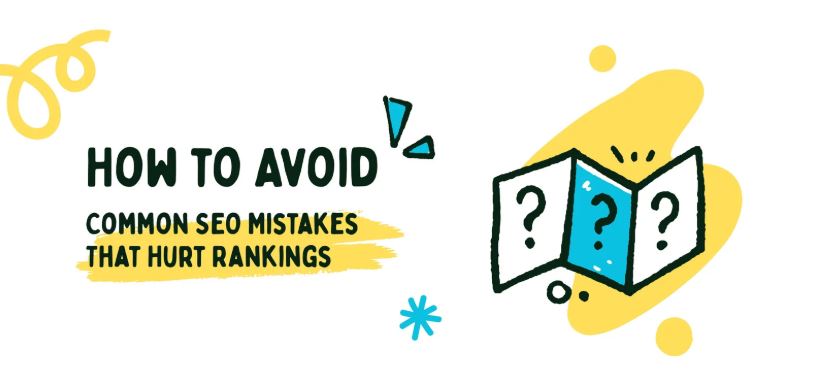
Imagine spending months creating content for your website, only to watch traffic trickle in—or worse, vanish entirely. The culprit? A sneaky SEO mistake. Many business owners don’t realize they’re falling into traps like skipping keyword research, publishing thin content, or overlooking technical SEO — along with other hidden pitfalls quietly holding their websites back
The good news? A few simple SEO improvements can lead to stronger search performance, higher rankings, and better online visibility.
Whether you run a local service business, physical store, or online shop, chances are you’ve made at least one of these common SEO mistakes.
The upside? Every SEO mistake can be fixed — and once corrected, your website can recover and climb the rankings quickly.
Research shows that nearly 29% of websites struggle with technical SEO issues that limit their performance. You’re not alone — most businesses face these challenges.
In this guide, we’ll explore the most common SEO mistakes and actionable ways to fix them. Let’s dive into the 9 most frequent SEO errors that could be hurting your rankings and visibility.
One of the easiest ways to waste your content efforts is to publish without knowing what people actually type into search engines. Many businesses either:
• Chase broad keywords that are way too competitive (like “marketing” or “shoes”).
• Fill their site with technical jargon that customers never search for.
End result? You either pull in the wrong crowd… or no one at all.
The Impact
Search engines try to match pages with what users are really looking for. If your keywords don’t line up, Google will show other sites instead. And even if you do get clicks, visitors bounce fast when the content doesn’t answer their question.
👉 Watch out for keyword cannibalization — when multiple pages target the same keyword, they compete against each other instead of boosting rankings.
Practical Steps
• Check real search data — Don’t guess. Free tools like Google Keyword Planner, Ubersuggest, and AnswerThePublic show you what people actually search.
• Focus on long-tail keywords (e.g., “best running shoes for flat feet” instead of just “shoes”).
• Look at questions people ask (“How do I choose running shoes for flat feet?”).
• Find competitor gaps — target extra keywords they’re missing.
Example in Action
A local florist wanted to rank for “flowers.” Too broad — barely any traffic. After keyword research, they pivoted to phrases like “same-day rose delivery” and “wedding bouquets near me.” Within weeks, they were getting visitors ready to buy, not just casual browsers.
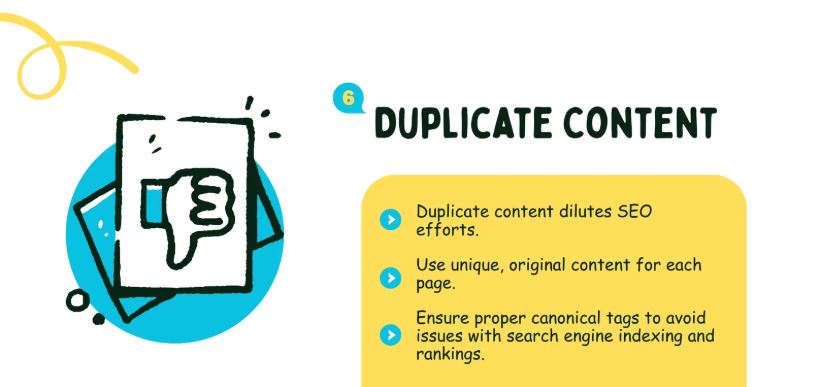
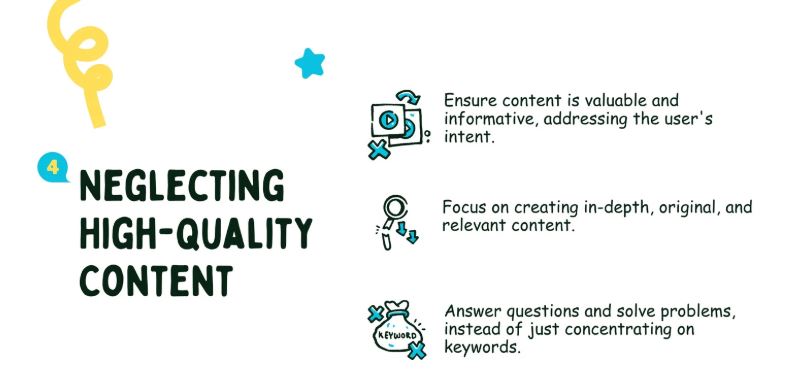
With Google’s Helpful Content update, short or generic posts just don’t cut it. Yet many businesses still pump out 200–300 word blogs or reuse product descriptions from manufacturers. Sure, it fills a page… but it won’t build traffic, rankings, or trust.
👉 This often creates duplicate content or even duplicate meta descriptions, which search engines may filter out, further lowering your visibility.
The Impact
• Google prioritizes content that fully answers user intent.
• Visitors leave fast if they don’t find value.
• Missed chances to show authority in your space.
Weak EEAT signals (Expertise, Experience, Authoritativeness, Trustworthiness).
➕ In 2024, Google’s AI Overviews and Search Generative Experience (SGE) began surfacing long-form, authoritative answers directly in search results. Short or shallow content now has an even lower chance of being featured, making depth and originality critical.
Practical Steps
• Start with your audience’s real questions — What do they ask before buying? What pain points can you explain better than competitors?
• Go long when it makes sense — Detailed guides (1,000+ words) work well for complex topics. It’s about depth, not fluff.
• Show authority — Add credentials, expert quotes, case studies, and real examples.
• Refresh older posts — Update with new stats, FAQs, or extra insights.
• Use multimedia — Charts, photos, videos, or interviews keep readers hooked.
• Plan with intent — If someone searches this phrase, what would they expect? Deliver the complete answer.
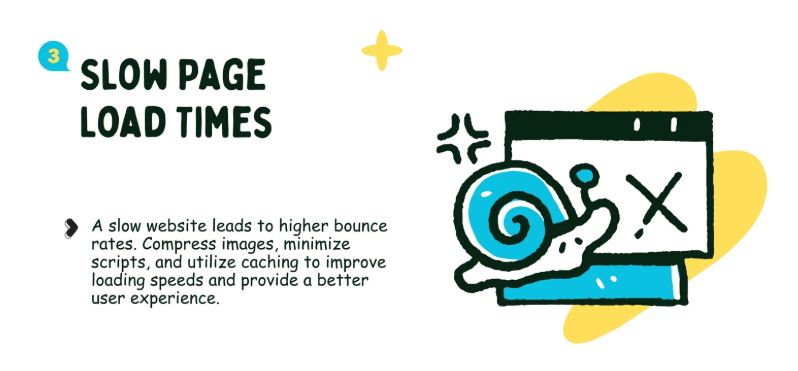
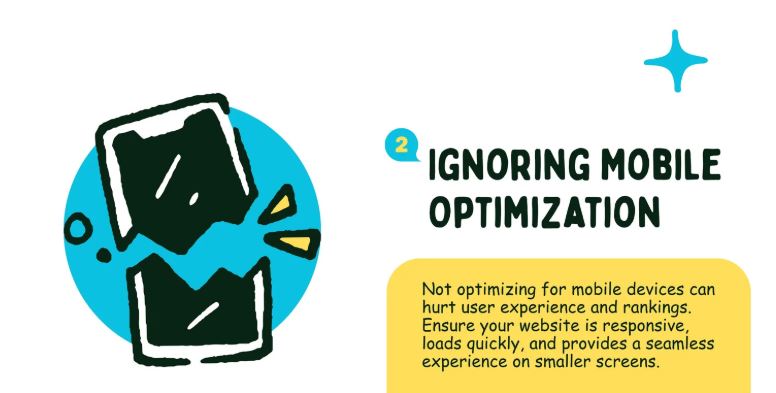
Technical SEO may not be glamorous, but it’s the foundation of performance. It includes site speed, crawlability, mobile optimization, and secure connections — all the behind-the-scenes elements that make content actually work.
👉 A 2024 industry survey found that nearly three in ten websites suffer from unresolved technical SEO problems, making it one of the most common barriers to better rankings.
The Impact of Technical SEO Issues
1. Slow Sites
• Frustrate users and drag down Core Web Vitals.
2. Mismanaged Links
• Waste crawl budget and erode trust.
3. Poor Mobile Optimization
• Kills rankings (Google is mobile-first).
4. Sitemap & Robots.txt Issues
• Bad or missing sitemaps/robots.txt confuse crawlers.
5. No HTTPS
• Makes your site look insecure.
6. Redirect Problems
• Mismanaged redirects or redirect chains slow down indexing and confuse crawlers.
7. Poor URL Structure
• Makes pages harder to rank.
8. Long or Messy URLs
• Random strings or tracking parameters lower user trust and CTR.
9. Text-to-HTML Ratio Issues
• Too much code and too little visible content may signal thin content.
10. Broken Images & Missing Alt Text
• Weaken both accessibility and SEO.
➕In 2025, Google placed a stronger emphasis on Interaction to Next Paint (INP) as part of Core Web Vitals.
Practical Steps
1. Improve Core Web Vitals
• Measure Core Web Vitals, then optimize images, code, and server speed (Google Search Console helps).
2. Configure Sitemaps & Robots.txt
• Upload a proper XML sitemap and configure robots.txt correctly.
3. Secure Your Site
• Get an SSL certificate — HTTPS is non-negotiable.
4. Audit Your Site
• Run audits with tools like Screaming Frog or Ahrefs to find broken links, faulty redirects, and canonical tag issues.
5. Fix Media Issues
• Fix broken images and always add descriptive alt text.
6. Add Structured Data
• Add schema markup (structured data) to boost chances of rich results.
7. Optimize for INP and Mobile Performance
• Reduce JavaScript bloat and test under mobile-first indexing.
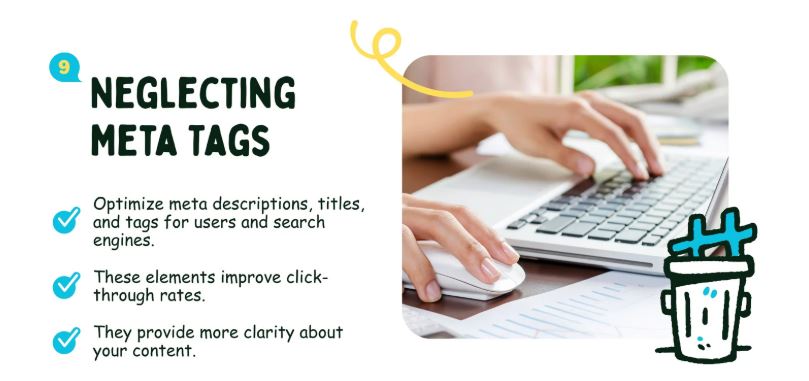
On-page SEO is the most basic form of SEO. It is how search engines learn what a page is about. Many businesses think, “I added the keyword once, so I’m done.” But a page without structured titles and headings, and without internal linking, will struggle to rank.
The Impact
• Without clear and precise keyword placement, search engines receive mixed signals.
• Pages of a site can compete with one another on the same keywords.
• You can lose the opportunity of capturing featured snippets or rich results.
Practical Steps
• Optimize your titles and metas. Keep them under 60 characters and compelling.
• Avoid duplicate or missing meta descriptions that don’t accurately describe your page.
• Structure your headings. Each page should have one H1, with logical H2s and H3s.
• Incorporate internal linking with descriptive anchor text.
• Optimize images with descriptive alt text.
• Use Schema markup like FAQ schema, review schema, and JSON-LD markup for higher snippet chances.
Unlike general SEO, Local SEO allows your business to appear in search results for customers looking for your business in your area.
Practical Steps
• Claim and optimize your Google Business Profile (GBP).
• Ensure NAP consistency (Name, Address, Phone).
• Target location-based keywords (“SEO services near me”).
• Encourage and respond to customer reviews.
• Build local backlinks from associations or directories.
• Use LocalBusiness schema to connect your business with local search intent.
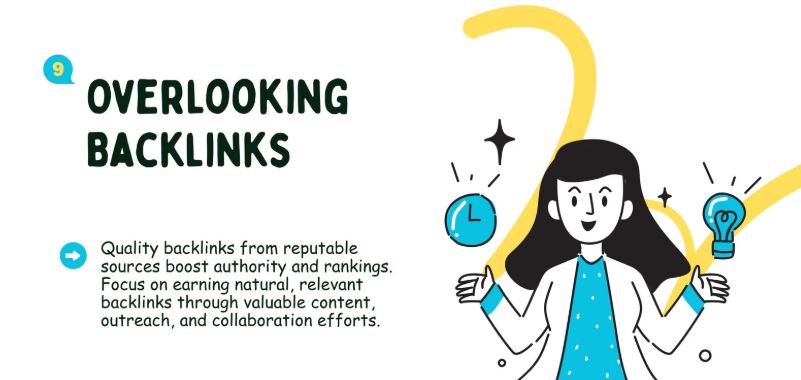
Content may be the engine, but backlinks are the fuel that helps it move up the rankings.
Practical Steps
• Create shareable resources (guides, infographics, tools).
• Earn contextual links with guest posting.
• Build local backlinks by sponsoring events.
• Do broken link building.
• During a redesign or site migration SEO, update backlinks and apply correct redirects to preserve link equity.
Even a site with high-quality content will perform poorly with a confusing site layout.
Practical Steps
• Use 3–5 main menu categories with shallow depth.
• Add breadcrumbs.
• Build strong content silos (e.g., “SEO Guides” hub).
• Make sure all key pages are reachable within three clicks.
• Ensure crawlability and avoid orphan pages.
• Compress images, use WebP images for, SEO, and apply lazy loading for better Core Web Vitals.
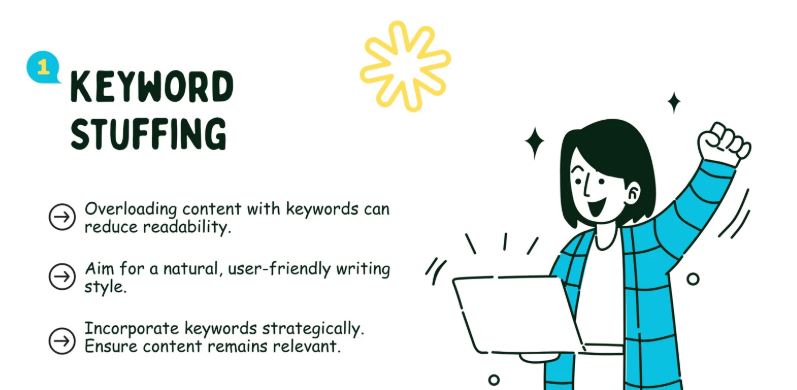
Some businesses go overboard, repeating the same keywords endlessly.
Practical Steps
• Write for users first.
• Mix in synonyms and variations.
• Use keywords in strategic places only.
• Add topical relevance with related semantic terms.
• Do the read-aloud test to avoid robotic tone.
Many businesses publish content and then leave it behind. Outdated info hurts trust and rankings.
Practical Steps
• Review older material every 6–12 months.
• Update stats, screenshots, and examples.
• Re-promote refreshed posts.
• Add FAQs, videos, or testimonials.
• Use JSON-LD FAQ schema for higher AI Overview visibility.
• Show “Updated [month/year]” near the top of posts for credibility.
Avoiding these common SEO mistakes can be the difference between a website that gets buried on page three and one that consistently attracts qualified traffic. The good news? Every SEO mistake — from weak keyword targeting to slow site speed — has a clear fix.
Quick Wins:
Audit Your Site
• Test page speed, check for broken links, and review meta tags.
• Find 1–2 problems that you can address quickly to have an immediate impact.
Refresh Outdated Content
• Modify statistics, examples, and frequently asked questions in old posts.
• Include new internal links.
Optimize Keyword Targeting
• Make sure every page has its own purposeful keywords.
• Prevent cannibalization of keywords by grouping similar content together.
Improve Core Web Vitals
• Resize images, reduce JavaScript, and improve mobile performance.
Track and Measure Progress
• Check traffic and rankings using Google Analytics and Search Console.
• Adjust your strategy based on the best-performing pages.
Build Authority & Trust
• Include professional quotes, case studies, or testimonials.
• Foster reviews and demonstrates social proof.
Arrange a Periodic SEO Checkup
• Review your site bi-monthly or 3–6 times per year.
• Also, keep the content up to date.
By taking small, consistent steps to improve your site’s SEO, you’ll not only boost rankings but also build long-term trust with both your audience and search engines.





